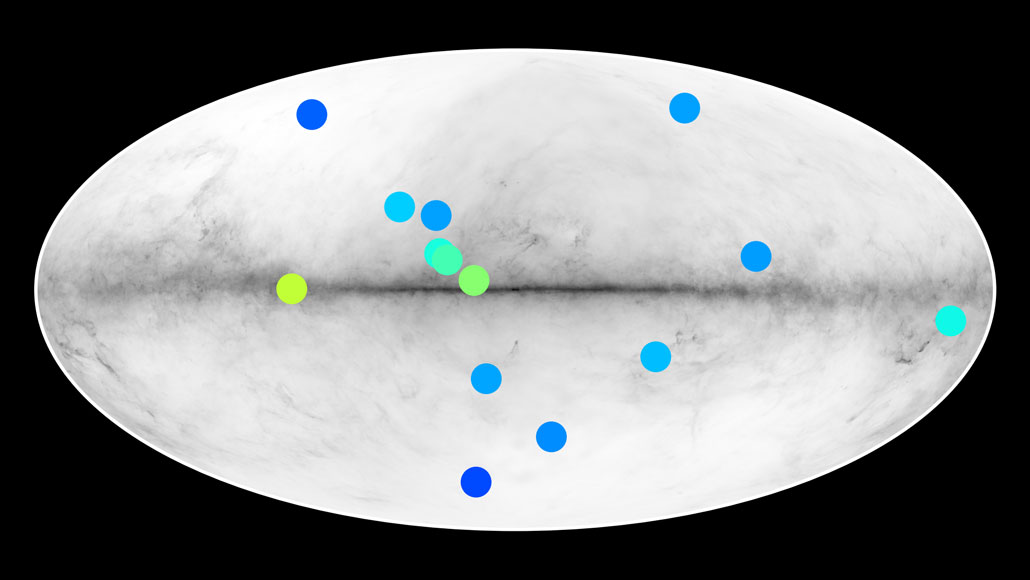Questions for “Stars made of antimatter could lurk in our galaxy”

Fourteen celestial sources of gamma rays look like they could be stars made of antimatter. Each potential antistar is a colored dot on this map of the Milky Way. Greener dots are brighter sources; bluer dots are dimmer.
Simon Dupourqué/IRAP